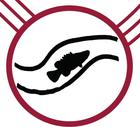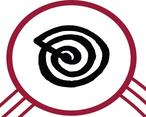8 Ways Creative and Productive Pedagogy Activities
How to embed basic Aboriginal perspectives across your classroom in one week…
A must read before you Start the process...
Below are some very basic activities, designed for people who are nervous or unsure of how to proceed. If you follow these basic steps it will work well, but we have seen a lot of teachers using the 8ways in a lot more creative and productive ways. If you decide to use 8ways like this (as most people unfortunately seem to do) then it should be a temporary measure. 8ways is just a model of some general Koori/Mardi pedagogies, not a universal program. Remember, your local pedagogies can only be found in your community, not in here...
Follow the steps from Monday to Friday, just fifteen minutes a day, and you will have permanently embedded Aboriginal perspective routines and practices in your classroom.
Monday
You can start out by highlighting the importance of yarning and storytelling for Aboriginal cultures. Show students the following picture and discuss what is going on there.
Explain that sitting in a circle for yarning like this is the way things are done, and the best way for learning through stories and yarns. You might then establish a place in your room or even outside where you can have a “yarning circle” for daily use by the class. Commit to always introducing new topics or learnings in this way, in your story-sharing circle.
Your class might study the same picture again and notice that people are drawing in the sand. You can explain that many Aboriginal people make maps and plans in this way, drawing or imagining the pathways of what they are going to do before they do it. Then you might make a space on the wall or on the board for making and displaying mind-maps of processes (e.g. problem-solving, report writing) or for visual maps of lessons, units or even whole terms of work. Students might collaborate in this process sitting in a circle around butcher’s paper on the floor. You can make this a routine practice in your class, as part of your method of explicit teaching practice. If you credit this as an Aboriginal way of doing things, you will be bringing a regular Aboriginal perspective into the way your classroom is organised.
Tuesday
Explain to students that a sense of direction and awareness of place are important aspects of Aboriginal culture. Place markers in the room for north, south, east and west and start delivering all your classroom instructions in ways that incorporate direction.
In your yarning circle, discuss with students the importance of local community to Aboriginal people. Assert that in Aboriginal culture, new learning is always judged on what the community impact will be and how it fits in with what is already known. Place a sheet on the wall with these questions (and the symbol above) –
What does this mean for me and my family?
What do we have here the same, and what is different?
How can I use this new learning to help my community?
Who in the community is going to see my work?
Ask students to answer these questions about your current unit of work. Commit to asking these questions at the start of each unit in the future. Asking these questions could be an important part of the process of mapping learning plans in your yarning circle.
Wednesday
For the first activity of the day where you expect students to produce something (writing, drawing, making etc.) make sure you model it for them first. Go through the model in detail and explain each part of it. Then show them the drum symbol above, explaining that it is a Torres Strait Islander drum. Maybe point out where the islands are on a map of Australia. Explain that an important rule for learning for Aboriginal and Torres Strait Islander people is to “watch first then do”. Ask if they watched you carefully when you showed them the model work for their task. Point to the left side of the drum symbol and tell them that was the first half of the activity – the watching. Then point to the right side of the drum and tell them now is the second half of the activity – the doing. They have to write/make/draw their own version of the model work you showed them at the start of the lesson. Place the symbol in plain sight in the room and commit to modelling student work from now on. When you do this, refer to the symbol. Use it to encourage self-directed learning.
Later in the day, in your yarning circle, place the above symbol in the middle where everybody can see it. Ask students if they have seen similar symbols before in Aboriginal art. Explain that it means two paths coming to the same point. Tell them that this symbol tells us about Aboriginal ways to learn as well – that the best learning and new ideas come when you put together two different ideas to make a new idea. Also point out that the path is not straight, showing the way creative ideas are made. Place the sheet on the wall and in future refer to it whenever you mention creativeness. You might write students’ names on the sheet when they do something creative, or you might even draw the symbol on their book if they do creative work.
Thursday
In your yarning circle, explain to the class that learning and communicating without words is an important part of Aboriginal culture. Ask them to come up with ideas for how they could learn or communicate without words. Discuss body language, sign language, facial expressions, learning through observation, hands-on learning. Get the class to brainstorm a few gestures for common classroom instructions, and commit to using these from now on.
In your yarning circle, remind the students of the yarn you had earlier about non-verbal Aboriginal ways of learning and communicating. Suggest that another way of learning non-verbally is from pictures and images, and that this is also an important part of Aboriginal culture. You might show some examples of Aboriginal art and explain that these contain important stories and messages for Aboriginal people. Tell them that all of the Aboriginal ways you have been teaching them this week have their own symbols too. Get them to point out and explain the ones they have seen already (e.g. the drum and the creative pathways symbol you have on your walls from yesterday). Then review all of the other Aboriginal ways you have explored this week and show them the symbol for each one.
Friday
You might revise the 8ways today and further discuss them with the students using some of the posters and resources on this page
In particular there is a poster called “How we learn – culture way” that shows each symbol beside a simple statement of what it means.
By now there should be enough new ideas and routines in place in your classroom to continue using these Aboriginal perspectives in every lesson from now on. If you keep it up, you’ll find that this work grows itself, and attracts Aboriginal community knowledge and involvement.








